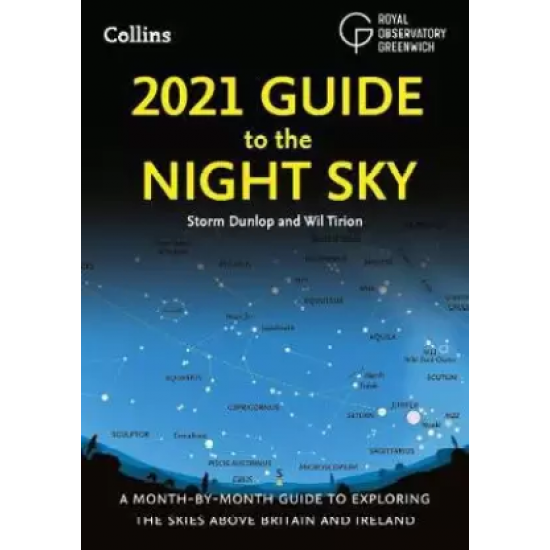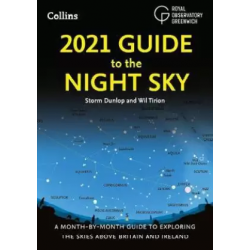2021 Guide to the Night Sky (English, Paperback, Dunlop Storm)

- Stock: In Stock
- Brand: generic
- Model: 9780008389048
- Weight: 0.20kg
- Dimensions: 12.00cm x 15.00cm x 6.00cm
- SKU: BSDCYSQAW
- ISBN: 9780008389048
Description
- Language: English
- Binding: Paperback
- Publisher: HarperCollins Publishers
- Genre: Science
- ISBN: 9780008389048, 9780008389048
- Pages: 112
2021 Guide to the Night Sky
Welcome to the 2021 Guide to the Night Sky, your essential companion for exploring the wonders of the celestial world. Whether you are a seasoned stargazer or a novice sky watcher, this guide is designed to help you navigate the night sky and discover the beauty of the universe above.
Highlights of the Year
From meteor showers to planetary alignments, 2021 promises to be a spectacular year for sky gazers. Here are some key events to look forward to:
- **Total Lunar Eclipse** (May 26): Witness the moon turning a deep shade of red during this breathtaking celestial event.
- **Perseid Meteor Shower** (August 12): Get ready for a dazzling display of shooting stars as the Earth passes through the debris left behind by Comet Swift-Tuttle.
- **Jupiter-Saturn Conjunction** (December 21): See the two giant planets come closest together in the night sky in almost 400 years, creating a once-in-a-lifetime sight.
Monthly Sky Highlights
Each month brings its own unique celestial events and phenomena. Here are some highlights to look out for throughout the year:
January
**Quadrantid Meteor Shower** (January 3-4): Start the year off with a sparkling show of meteors streaking across the sky.
**Mars at Opposition** (January 22): See the red planet at its brightest and most visible in the night sky.
**Venus-Mercury Conjunction** (January 29): Watch as the two inner planets appear to meet in the evening sky.
February
**Snow Moon** (February 27): Look out for the full moon of February, traditionally known as the Snow Moon.
March
**Spring Equinox** (March 20): Celebrate the start of spring and enjoy equal hours of daylight and darkness.
**Venus at Greatest Eastern Elongation** (March 26): See Venus at its furthest point from the sun in the evening sky.
April
**Lyrid Meteor Shower** (April 22-23): Catch a glimpse of the Lyrid meteors, which radiate from the constellation Lyra.
May
**Eta Aquariid Meteor Shower** (May 6-7): Watch as the Earth passes through the debris left behind by Halley's Comet, creating a spectacular meteor shower.
**Total Lunar Eclipse** (May 26): Don't miss the chance to witness the moon turn a deep shade of red during this stunning celestial event.
June
**Strawberry Moon** (June 24): Look out for the full moon of June, also known as the Strawberry Moon.
July
**Delta Aquariid Meteor Shower** (July 28-29): Enjoy a display of meteors originating from the constellation Aquarius.
August
**Perseid Meteor Shower** (August 12): Prepare for a dazzling show of shooting stars as the Earth passes through the debris left behind by Comet Swift-Tuttle.
September
**Autumn Equinox** (September 22): Welcome the arrival of autumn and enjoy equal hours of daylight and darkness.
October
**Orionid Meteor Shower** (October 21-22): Look out for meteors emanating from the constellation Orion, visible in the night sky.
November
**Beaver Moon** (November 19): Keep an eye out for the full moon of November, traditionally known as the Beaver Moon.
December
**Geminid Meteor Shower** (December 13-14): Don't miss the opportunity to see the Geminid meteors, one of the best meteor showers of the year.
**Jupiter-Saturn Conjunction** (December 21): Witness the rare sight of Jupiter and Saturn appearing closest together in the night sky in almost 400 years.
Planetary Events
Throughout the year, the planets of our solar system will put on a show in the night sky. Here are some key planetary events to watch out for:
- **Mars** will be at opposition on January 22, bringing the red planet closest to Earth and making it appear bright and visible in the night sky.
- **Mercury** will reach its greatest eastern and western elongations on March 6 and July 4, respectively, providing excellent opportunities to observe the innermost planet.
- **Venus** will be at its greatest eastern elongation on March 26, making it a brilliant evening star in the sky.
- **Jupiter and Saturn** will form a rare conjunction on December 21, appearing closest together in the night sky in almost 400 years.
Observing Tips
Here are some tips to enhance your stargazing experience:
- Find a dark location away from city lights to observe the night sky.
- Use a red flashlight or cover your regular flashlight with red cellophane to preserve your night vision.
- Bring a telescope or binoculars for a closer look at celestial objects such as planets, stars, and nebulae.
- Check the weather forecast to ensure clear skies for optimal viewing conditions.
- Download a stargazing app to help you identify constellations, planets, and other celestial objects.
Specifications
| Additional features | |
| Generic Name | Books |
| ISBN | 9780008389048 |
| General | |
| Condition | New |







